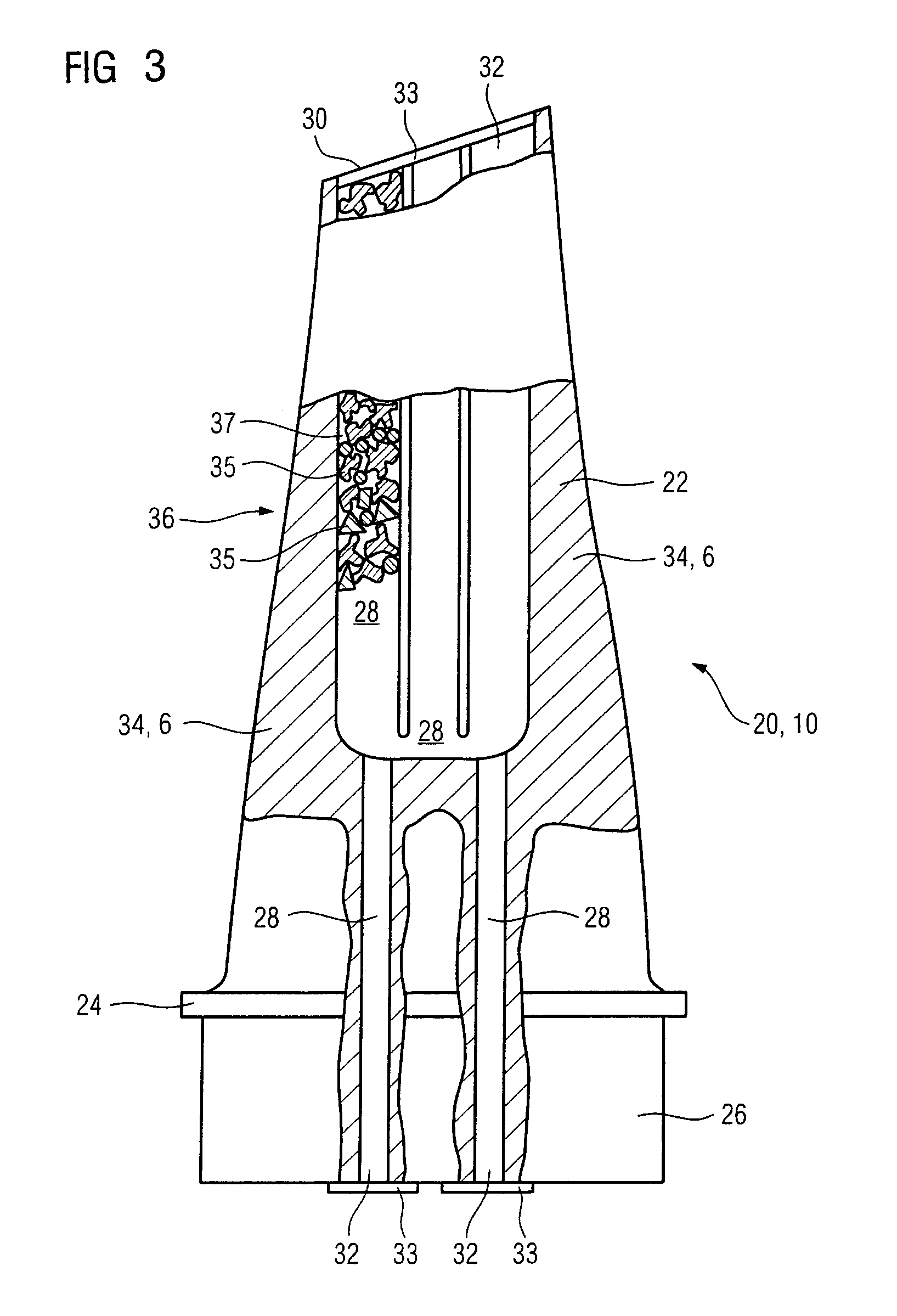High-temperature component for a turbomachine, and a turbomachine
a technology of high-temperature components and turbomachines, which is applied in the direction of machines/engines, liquid fuel engines, other chemical processes, etc., can solve the problems of material fatigue, shortened service life, and shortened service life of blades and vanes, so as to reduce vibration, reduce load, and protect blades and vanes. the effect of high temperatur
- Summary
- Abstract
- Description
- Claims
- Application Information
AI Technical Summary
Benefits of technology
Problems solved by technology
Method used
Image
Examples
Embodiment Construction
[0023]Parts which correspond to one another are provided with identical reference symbols throughout the figures.
[0024]FIG. 1 shows a base material 1 which is formed from a porous material 2. The porous material 2 is filled with a viscous filler 4 and surrounded by a solid layer 6.
[0025]The porous material 2 used is, for example, a raw material based on silicon dioxide, a raw material based on aluminum oxide, a raw material based on zirconium oxide, a raw material based on magnesium oxide, a raw material based on aluminum titanate, a raw material based on silicon carbide or a raw material based on mica and aluminosilicates. Depending on the specific stipulations, the porous material may have a porosity of at most 20%, in particular from 5% to 15% or from 10% to 15%. The porous material 2 may also have a porosity which varies, e.g. from 10%, 20% to at most 30%, or a variable pore size, e.g. a mean pore size of from 20 μm to 80 μm, in particular from 20 μm to 40 μm or 40 μm to 60 μm.
[...
PUM
| Property | Measurement | Unit |
|---|---|---|
| porosity | aaaaa | aaaaa |
| porosity | aaaaa | aaaaa |
| thickness | aaaaa | aaaaa |
Abstract
Description
Claims
Application Information
 Login to View More
Login to View More - R&D
- Intellectual Property
- Life Sciences
- Materials
- Tech Scout
- Unparalleled Data Quality
- Higher Quality Content
- 60% Fewer Hallucinations
Browse by: Latest US Patents, China's latest patents, Technical Efficacy Thesaurus, Application Domain, Technology Topic, Popular Technical Reports.
© 2025 PatSnap. All rights reserved.Legal|Privacy policy|Modern Slavery Act Transparency Statement|Sitemap|About US| Contact US: help@patsnap.com



